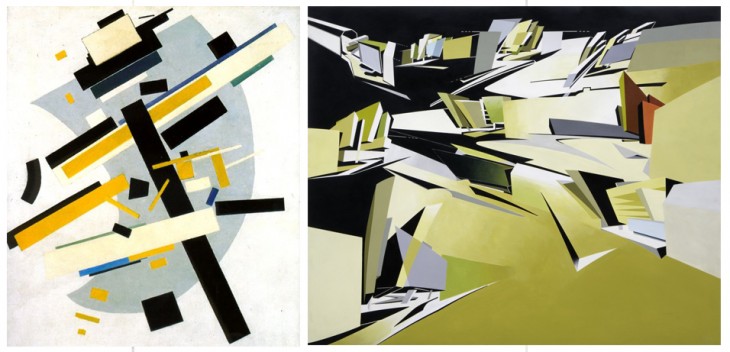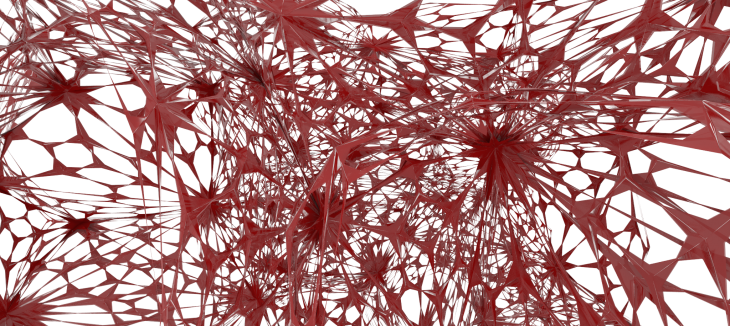Book: A Thousand Plateaus: Capitalism and Schizophrenia
Author: Gilles Deleuze and Felix Guattari
Chapter: I- Rhizome
Rhizome: A horizontal, underground plant stem capable of producing the shoot and root systems of a new plant. (source: www.britannica.com)
Rhizome by Deleuze and Guttari is abstracted by relating it with multiple phenomenons. As per the book Rhizome is multiplicity connected to each other in vivid manner along the plane of consistency. A rhizome is something without a beginning or an end, without any sort of hierarchy, non-linear and with multiple entry and exit points. Rhizome is anti-arborescent model. An arborescent model is something which develops around central core or has central nucleus. Hence rhizome has no privileged center and has bigger dimensions than any arborescent model. This rhizome connect in bigger dimension and in multiple ways with different variety of elements to form assemblagesThese assemblages can be categorized into two main types (a) machinic assemblages: which deals with social and material flows (b) collective assemblages : which deals with sign or linguistic flows.
Further Deleuze and Guttari give introduces principles of rhizomes in order to understand its specific characteristics
1) Principle of connectivity: The rhizome can be connected at any point in any manner. It does not require a specific origin. its collective and continuous.
2)Principle of heterogeneity: What is connected can completely be two different things. Any rhizome connects in heterogeneous manner. Further explained through example of wasp and orchid, where male wasp is attracted to orchid as central part looks like female wasp and hence engages itself in transference of pollen from one to other. similarly is the case with viruses, it carries genetic information and travel from host to host. hence wasp and orchid, viruses and its host connect to form a rhizome
3)Principle of multiplicity: Any rhizome can be multiply connected in varied manner to form acentered, asubjective, interwoven network.
4)Principle of asignifying rupture: A rhizome may be broken but will start up its own lines or new lines by interconnecting and multiplying in a heterogeneous manner. Hence a rhizome can never be destroyed. And it is not necessary that broken rhizome follows similar characteristic once connected to other from a ruptured end. For example a line of ant, if one tries to break the queue within few time it will again form new queue and not be necessary it is the same path as earlier, but will try to regenerate itself. Further explained through the concept of deterritorialization- Where newly designed multiplicity is re-coded with different set of functions rather than following what it was originally designed for. For example the computers were initially designed to perform arithmetic calculation but now its used in varied fields. Thus function of computer is deterritorialized and now reterritorialized for multiple function in varied fields. hence here the function of computers act as rhizome.
5) and 6)Principle of cartography and decalcomania: A rhizome is more like a map, one can enter at any point an exit at any point, its never ending multiplicity. A map is never fixed but its constantly changing. Hence rhizome is map of complexities which can never be traced. As it does not have single point of origin which can be traced back, but a complex network with multiple entry and exit points.

Left: Kazimir Severinovich Malevich’s Suprematism,
Right: Hafenstrasse Office and Residential Development by Zaha Hadid | Hamburg | 1989
image courtesy:
left: http://commons.wikimedia.org/wiki/File:Kazimir_Malevich_-_Supremus_58.jpg
Right: http://archilibs.net/2013/04/21/hafenstrasse-office-zaha-hadid/
The book itself behaves as rhizome as any chapter can be read in any manner. It does not follow a specific format. Such model is interactive as well as intriguing. Such phenomenon can also be understood through various architectural movements. For example new movement of deconstructivism in architecture emerged through literary writings of french philosopher jacques derrida who emerged new branch of deconstructivism in literature from constructivist literature. Also Russian constructivist and futurist art movments inspired architects like Zaha Hadid and coop Himmelblau both in their graphics and geometrical forms.

